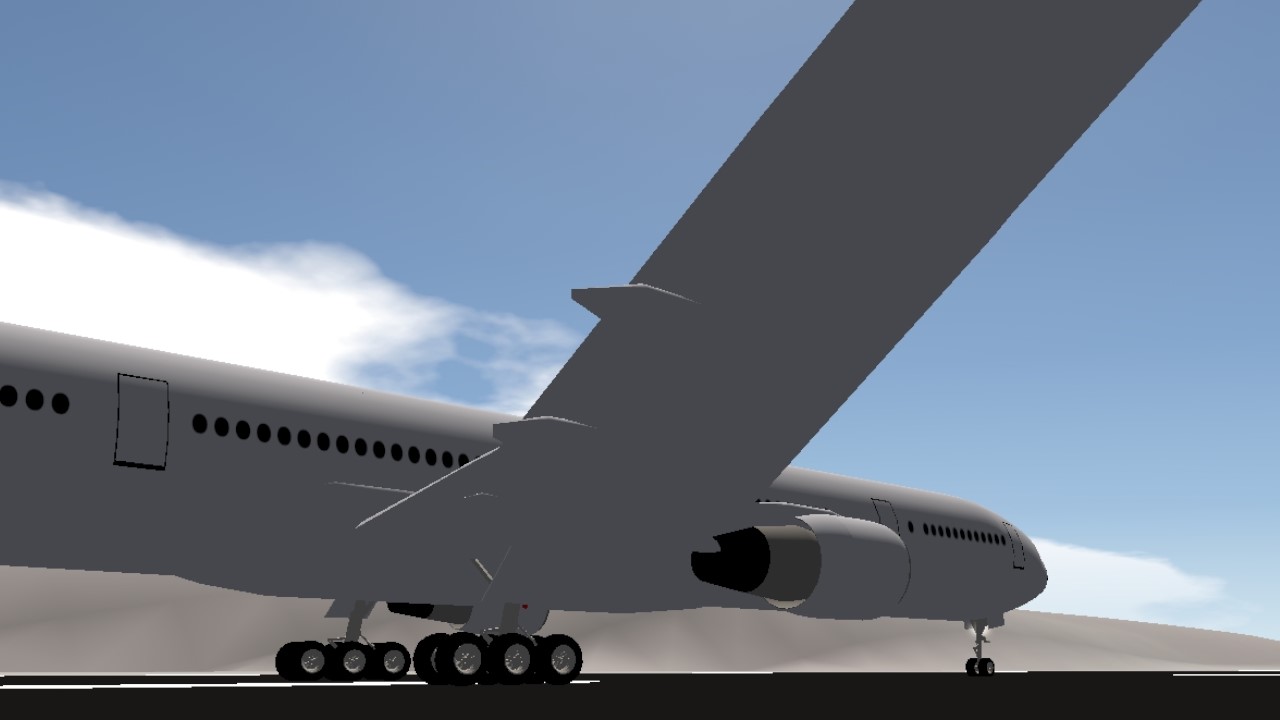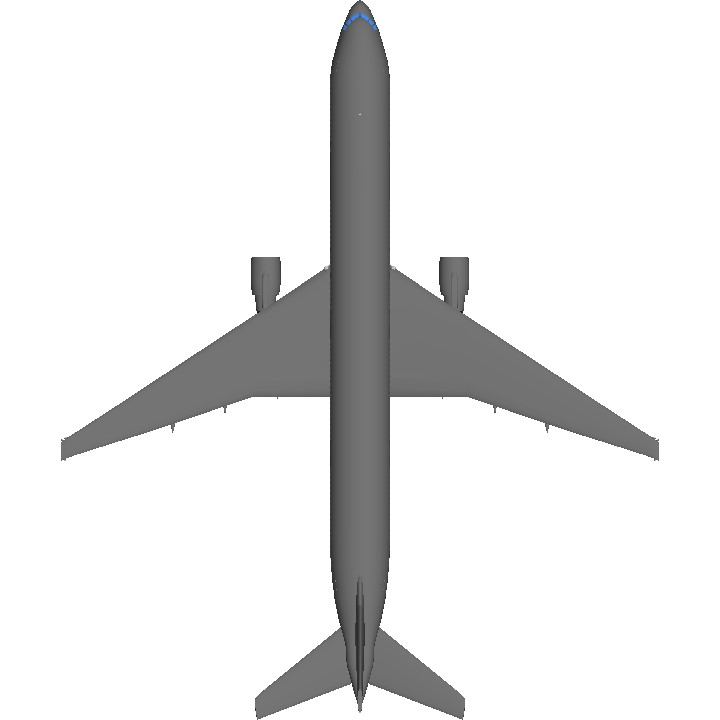Not to be confused with the Boeing 777-300ER (B77W).
The Boeing 777, commonly referred to as the Triple Seven, is an American long-range wide-body airliner developed and manufactured by Boeing Commercial Airplanes. The 777 is the world's largest twinjet and the most-built wide-body airliner. The jetliner was designed to bridge the gap between Boeing's other wide body airplanes, the twin-engined 767 and quad-engined 747, and to replace aging DC-10 and L-1011 trijets. Developed in consultation with eight major airlines, the 777 program was launched in October 1990, with an order from United Airlines. The prototype was rolled out in April 1994, and first flew in June. The 777 entered service with the launch operator United Airlines in June 1995. Longer-range variants were launched in 2000, and first delivered in 2004.
The original 777 with a maximum takeoff weight (MTOW) of 545,000–660,000 lb (247–299 t) was produced in two fuselage lengths: the initial 777-200 was followed by the extended-range -200ER in 1997; and the 33.25 ft (10.13 m) longer 777-300 in 1998. These 777 Classics were powered by 77,200–98,000 lbf (343–436 kN) General Electric GE90, Pratt & Whitney PW4000, or Rolls-Royce Trent 800 engines. The extended-range 777-300ER, with a MTOW of 700,000–775,000 lb (318–352 t), entered service in 2004, the longer-range 777-200LR in 2006, and the 777F freighter in 2009. These longer-haul variants use 110,000–115,300 lbf (489–513 kN) GE90 engines and have extended raked wingtips. In November 2013, Boeing announced the 777X development with the -8 and -9 variants, both featuring composite wings with folding wingtips and General Electric GE9X engines.
ABOUT THE BOEING 777-300 MODEL
Launched at the Paris Air Show on June 26, 1995, its major assembly started in March 1997 and its body was joined on July 21, it was rolled-out on September 8 and made its first flight on October 16.[190] The 777 was designed to be stretched by 20%: 60 extra seats to almost 370 in tri-class, 75 more to 451 in two classes, or up to 550 in all-economy like the 747SR. The 33 ft (10.1 m) stretch is done with 17 ft (5.3 m) in ten frames forward and 16 ft (4.8 m) in nine frames aft for a 242 ft (73.8 m) length, 11 ft (3.4 m) longer than the 747-400. It uses the -200ER 45,200 US gal (171,200 L) fuel capacity and 84,000–98,000 lbf (374–436 kN) engines with a 580,000 to 661,000 lb (263.3 to 299.6 t) MTOW.
It has ground maneuvering cameras for taxiing and a tailskid to rotate, while the proposed 716,000 lb (324.6 t) MTOW -300X would have needed a semi-levered main gear. Its overwing fuselage section 44 was strengthened, with its skin thickness going from the -200's 6.3 to 11.4 mm (0.25 to 0.45 in), and received a new evacuation door pair. Its operating empty weight with Rolls-Royce engines in typical tri-class layout is 343,300 lb (155.72 t) compared to 307,300 lb (139.38 t) for a similarly configured -200. Boeing wanted to deliver 170 -300s by 2006 and to produce 28 per year by 2002, to replace early Boeing 747s, burning one-third less fuel with 40% lower maintenance costs.
With a 660,000 lb (299 t) MTOW and 90,000 lbf (400 kN) engines, it has a range of 6,005 nautical miles (11,121 km; 6,910 mi) with 368 passengers in three-class. Eight different customers have taken delivery of 60 aircraft of the variant, of which 18 were powered by the PW4000 and 42 by the RR Trent 800 (none were ordered with the GE90, which was never certified on this variant), with 48 in airline service as of 2018. The last -300 was delivered in 2006 while the longer-range -300ER started deliveries in 2004.
Credits to: @GalacticaAsia for the model. Retrofitted with PW4000.
Specifications
General Characteristics
- Predecessor [Updated]B777-300ER
- Successors 1 airplane(s) +21 bonus
- Created On Android
- Wingspan 201.4ft (61.4m)
- Length 242.4ft (73.9m)
- Height 62.6ft (19.1m)
- Empty Weight N/A
- Loaded Weight 118,314lbs (53,666kg)
Performance
- Power/Weight Ratio 0.641
- Horse Power/Weight Ratio 0.025
- Wing Loading 21.3lbs/ft2 (104.1kg/m2)
- Wing Area 5,547.8ft2 (515.4m2)
- Drag Points 14982
Parts
- Number of Parts 430
- Control Surfaces 11
- Performance Cost 2,405





Good job, but rescale the engines, these are so tiny